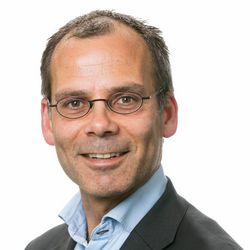Published on 16 July 2020
Accelerating the Energy Transition in Deventer with GROHW
Local entrepreneurs launch initiative to develop a green hydrogen system in Deventer
Some ten companies and institutions in Deventer took the initiative to develop a scalable hydrogen system there. Hydrogen is an indisputable link in the energy transition to zero-emission. The initiative focuses on the technical and economic options for generating, storing and distributing green hydrogen, oxygen and residual heat. To achieve the best possible balance between energy supply and demand, the companies are developing the architecture for a unique digital trading platform.
Scalable design
The outcome of GReen Oxygen, Hydrogen and Wasteheat (GROHW), as the Deventer initiative is called, is a blueprint: a scalable design that can also be used in other industrial areas in combination with wind and solar farms. The hydrogen system consists of an installation (electrolyser) which produces hydrogen and oxygen using sustainable electricity, releasing part of the electrical energy as residual heat. Alongside the hydrogen, the released oxygen and residual heat will also be used in GROHW. The green hydrogen generated locally can be used in the area by industry, mobility and the built environment. This all means barely any energy is lost.
Current electricity grid gets overloaded
The project aligns with Deventer municipality’s ambition to be energy-neutral by 2030. The current energy infrastructure is subject to bottlenecks caused by the rapid increase in locally-generated renewable energy from photovoltaic panels and wind turbines. The regular electricity grid has difficulty handling this, while the future will see an increasing demand for renewable energy.
This spurred the Deventer initiative GROHW, a solution enabling sustainable electricity to continue being generated, stored and distributed smartly on a local scale.
Energy carrier of the future
The philosophy underlying GROHW is to turn hydrogen, as the ultimate energy carrier of the future, into a future-proof business case. The concept has been developed to enable electrolysers to be produced in large numbers, thus significantly reducing the cost price. This is in contrast to the development of ever-larger electrolysers, where there are attempts to reduce costs by increasing scale. Now in developing this technology, what’s needed is to invest to make it both affordable and broadly deployable in good time, as part of the necessary energy transition.
The participating companies and institutions are highly motivated to contribute to this. The participants in this project are: Witteveen+Bos, Saxion University of Applied Sciences, HanzeNet, Brandeniers, Rabobank, Asfaltcentrale Stedendriehoek (ACS), Vos Transport, Van Dorp Installaties, Koninklijke Auping, MTSA Technopower and HAN University of Applied Sciences.
Collaboration between government and Rabobank
The province of Overijssel granted a subsidy to carry out this project, alongside a small contribution from the province of Gelderland. Rabobank is demonstrating its commitment by making its knowledge available and bearing part of the project costs. Would you like to stay up to date on the latest developments? Then visit grohw.nl.
Share this page
More information?
